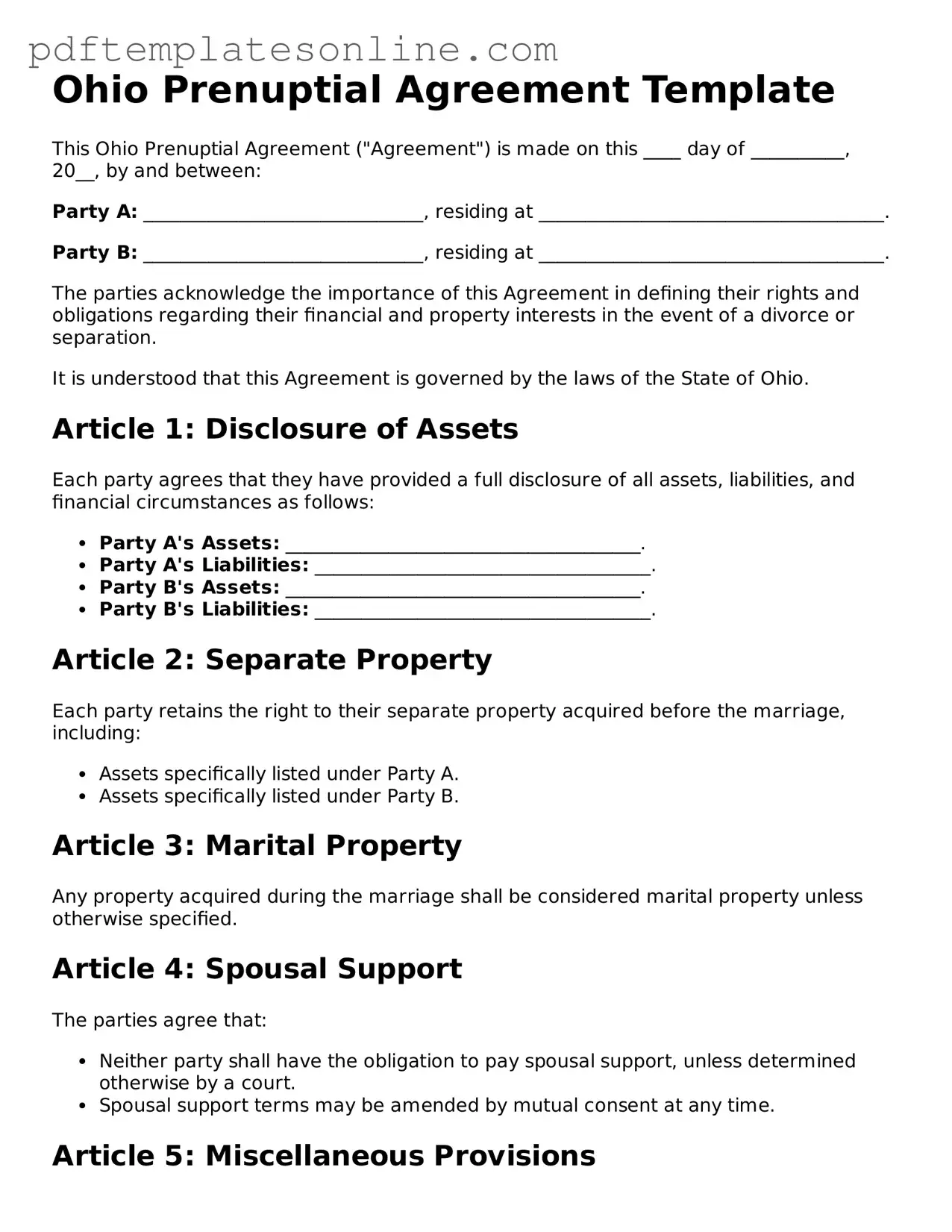Detailed Guide for Writing Ohio Prenuptial Agreement
Filling out a prenuptial agreement form in Ohio is an important step for couples considering marriage. This process allows both parties to clearly outline their financial rights and responsibilities before tying the knot. Once you have the form ready, it’s essential to approach it thoughtfully to ensure that all necessary information is accurately captured.
- Begin by obtaining the Ohio Prenuptial Agreement form. You can find this online or through legal resources in your area.
- Carefully read through the form to familiarize yourself with the sections that need to be completed.
- In the first section, provide your full names and contact information. Ensure that both parties’ details are accurate.
- Next, disclose your current financial situation. List all assets, liabilities, and income sources for both individuals.
- Outline how you want to handle assets and debts acquired during the marriage. Be specific about ownership and division in case of separation or divorce.
- Include any provisions regarding spousal support or alimony. Clearly state whether either party will be entitled to support and under what conditions.
- Both parties should review the agreement thoroughly. Discuss any changes or concerns to ensure mutual understanding.
- Once both parties are satisfied, sign the document in the presence of a notary public. This step is crucial for the agreement to be legally binding.
- Make copies of the signed agreement for both parties. Store the original in a safe place.
By following these steps, you can ensure that your prenuptial agreement is completed correctly, paving the way for a clear understanding of financial matters as you embark on your marriage journey.
